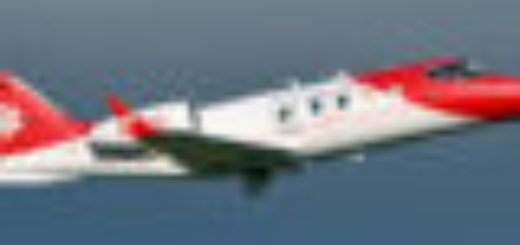Farewell flight–NASA’s classic DC-8 finally retires with historic flyby: video

After 37 years of sterling service operating a huge range of specialist research missions, the National Aeronautics and Space Administration’s specially modified Douglas DC-8 airliner has made its final flight in some style.
On May 15, 2024, the vintage jet was flown at low altitude from NASA’s Armstrong Flight Research Center at Edwards Air Force Base, California, to an airfield near Idaho State University in Pocatello, Idaho, where it will be used to train future aircraft technicians at the college’s Aircraft Maintenance Technology Program.
Having completed its final NASA mission on April 1, 2024, the DC-8, with registration N817NA, departed from Edwards Air Force Base at around 10:00 AM local time, before assuming its especially low cruising altitude of just 3,500ft for the start of its final farewell flight.

Along its route to retirement, the aircraft made several notable appearances, saluting the teams it has worked with over almost four decades of service with NASA. The aircraft wrapped up its career with a final flyover around South Bay near San Jose, California, and some spectacular low passes over the runway at Moffett Federal Airfield in Mountain View, California, the location of NASA’s Ames Research Center.
Having bid farewell to NASA employees in Silicon Valley, the aircraft headed north for a scenic flyby around iconic San Francisco Bay before climbing to a cruising altitude of 21,000ft and heading eastwards to Idaho. The aircraft made its last-ever landing at Pocatello Regional Airport (PIH), shortly after 14:00 local time.
Since 1986, the NASA Douglas DC-8-72, with its unique refitted cabin, has functioned as an airborne science laboratory. Throughout the years, the aircraft has performed dozens of missions, helping scientists at the organization perform experiments in meteorology, oceanography, and other earth and space sciences that would be impossible at ground level.
The aircraft, along with its onboard equipment, had the capability to gather data at different altitudes. This data can then be used across dozens of disciplines, from hydrology and meteorology to biology and cryospheric sciences, as well as studies of the effects of global warming.
According to NASA, the aircraft specialized in four areas of research in particular: sensor development, satellite sensor verification, space vehicle launch or re-entry tracking, and studies of the Earth’s surface and atmosphere.
Notwithstanding the retirement of N817NA, NASA has a replacement lined up for its airborne laboratory program in the shape of a modified Boeing 777-200ER. According to reports, this was purchased on the aftermarket for $30 million.
The post Farewell flight–NASA’s classic DC-8 finally retires with historic flyby: video appeared first on AeroTime.
After 37 years of sterling service operating a huge range of specialist research missions, the National Aeronautics and…
The post Farewell flight–NASA’s classic DC-8 finally retires with historic flyby: video appeared first on AeroTime.






